Bernese Mountain Dog Breed Information Training Temperament Personality
Housebreaking a Bernese Mountain Dog Puppy
Patience, positive reinforcement and above all, consistency will help you potty train your Bernese Mountain Dog. The goal of housebreaking him is to inculcate healthy habits and connect with him.
It takes between four months and half a year to house train a puppy. Some dogs may take about a year to become fully trained.
The size of a dog may decide how well-trained he will become. Little dogs, of course, have smaller bladders and will need more frequent walks. Another deciding factor is his earlier living conditions. If your puppy’s previous owner never brought him outside before, you may find yourself struggling to help him overcome poor habits.
Note that you shouldn’t worry about failure. Dogs often master commands after many tries. Just recognize the signs that your dog needs to go, and take him out then.
a. When should you start housebreaking your Bernese Mountain Dog?
All owners want to house train their pups as quickly as possible. It will take between 12 and 16 weeks to show your young Berner the ropes.
It may take longer to train your puppy if he’s lived in a cage for a long time. He may have eaten his poo as well. It takes effort, rewards, and encouragement to push him forward.
b. House Training Procedures
Housebreaking a puppy isn’t rocket science if you follow the recommendations of experts. They usually suggest enclosing your puppy in a crate or room. After he becomes potty trained, you can give him the freedom to run about the house.
To house train him, make sure that he keeps to a regular feeding schedule. Don’t let him eat between meals.
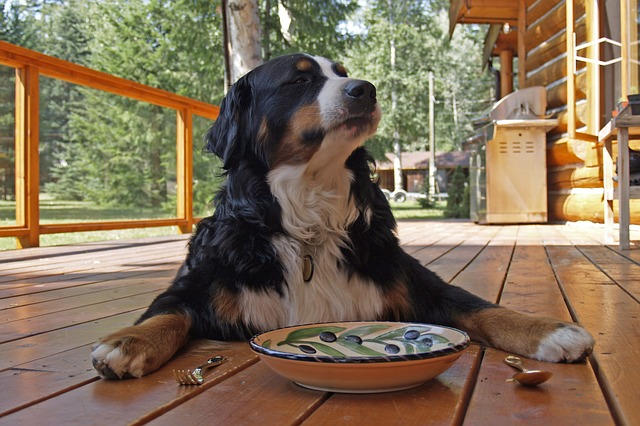
Bring your dog out on daily walks. He should ease himself early in the morning, then once every half an hour. Take him out after meals or as soon as he wakes up. Make sure that he does his business before he sleeps.
He should do it at the same place because his scent will lure him to it. When he eliminates, treat or praise him. You may also walk him around the park as a reward.
c. When Crate Training A Puppy
A crate can serve as a training tool. It will allow you to note when your puppy needs to ease himself and remind him not to eliminate when you let him out of it.
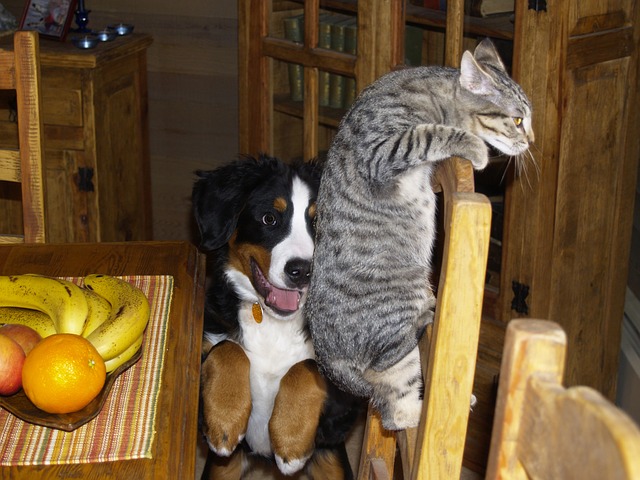
Get a crate that’s large enough for your furry friend. He shouldn’t find a problem standing, sitting or turning around in it.
It should come with a water dispenser. Make sure that your dog has fresh water to drink.
If you’re busy at work, make sure that someone at home can take him out of the crate and give him a break.
Don’t crate train your dog if he associates crates with easing himself. He could have brought bad habits from the shelter or pet shop. You may also find him eating his poo.
d. Signs that your dog needs to go
How would you know if your dog needs to go?
If he circles, whines, sniffs or thumps at the door, you probably need to take him out at once.
e. The Dos and Don’ts of House Training
There are some things to note while house training your Bernese Mountain Dog.
You shouldn’t punish him for easing himself in the wrong area. Doing this will not teach him to go in the right place. Instead, it only prompts him to fear you. Puppies can’t associate your anger with their accidents.
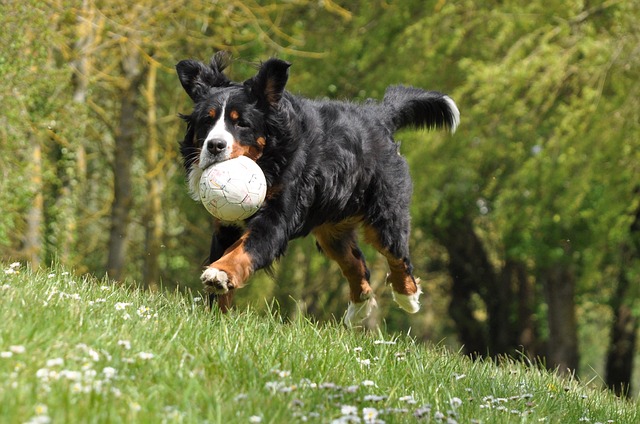
Clap loudly and praise him if he eases himself at the right area. Give him a treat as well.
Staying outside longer with your dog may help to curb accidents. He may need the extra time to explore.Clean up accidents with an enzymatic cleanser rather than an ammonia-based cleaner to minimize odors that might attract the puppy back to the same spot. Stay out with your dog if he needs time to sniff around.
Grooming A Bernese Mountain Dog
The Bernese Mountain Dog is a simple, hardworking fellow. As such, don’t give him a fussy, frilly appearance. It only needs to look neat.
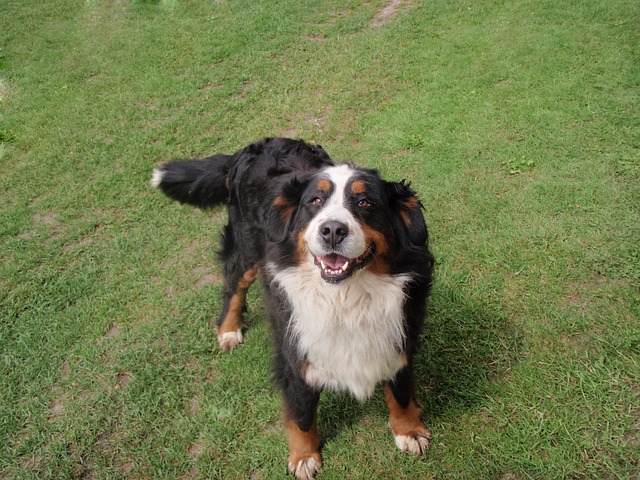
a. Grooming the coat
This Swiss Mountain Dog has a silky coat which repels dirt and mud. Bathing him too often can cause dry skin, so it’s wise to do so only once a month. Bear in mind that this is for cold-weather needs, as breeders adapted it to survive in the cold air from the mountains.
Though you won’t want to shampoo him too often, you may want to give him a good daily brushing. The goal is to take away as much loose fur as you can. Because it sheds lots of hair, regular brushing will decrease the time you spend vacuuming and cleaning. Use a pin brush to remove the loose hairs off the top coat and a slicker brush to do the same for the undercoat. If his hair becomes tangled, you may have to use a mat rake. With sharpened teeth, this tool is the best one for the job.
b. Trimming the Bernese Mountain Dog’s Nails
As with other dogs, you’ll have to cut the Bernese Mountain Dog’s nails regularly. You can use a grinder designed for dogs. Alternatively, you may use pet nail clippers. A dog’s nail will have a pinkish quick that sends blood to it. Of course, you’ll have to avoid cutting into it, so remove just a quarter of the nail. It usually pulls back into the toe and emerges after a few days, allowing further trimming.
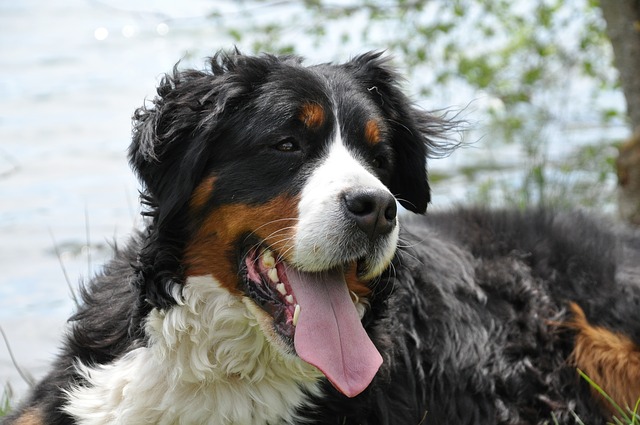
Cut your dog’s nails once every week until they are short enough. After they reach the correct length, upkeep them by trimming them once every two weeks. To prevent your dog from slipping, cut the hair between its nails with a dull pair of scissors.
c. Caring for the Bernese Mountain Dog’s Ears
For grooming and hygiene purposes, you need to care for your Bernese Mountain Dog’s Ears. Do clean them regularly to prevent wax from building up. Also, regular cleaning prevents infections and other health problems. Make sure that you use ear-cleaning solutions that you can buy from a pet store near you.
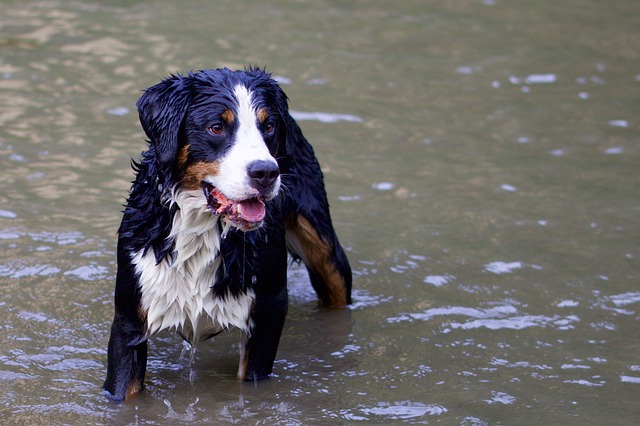
Follow the instructions on the labels. A few drops will loosen the wax and dirt. The dog naturally removes the debris when it shakes its head.
When trimming the hair around your dog’s ears, remember that it should look natural. You can use a blunt pair of scissors or leave the hair as it is. Brush the hair to get rid of tangles.
d. What happens if you live in a warm climate?
These dogs do well in cold weather. If you reside in a warmer climate, you may want to keep his coat short and neat. If you want to show off your dog, you may want to leave the hair uncut and natural. Use clippers meant for use on animals. There are no ill effects from shaving your Bernese Mountain Dog, though its hair may grow back unevenly.
How to groom a Bernese Mountain Dog
Now that you know what to look out for when grooming a Bernese Mountain Dog, it’s time to practice the steps. Here’s how to get him to look regal and charming.
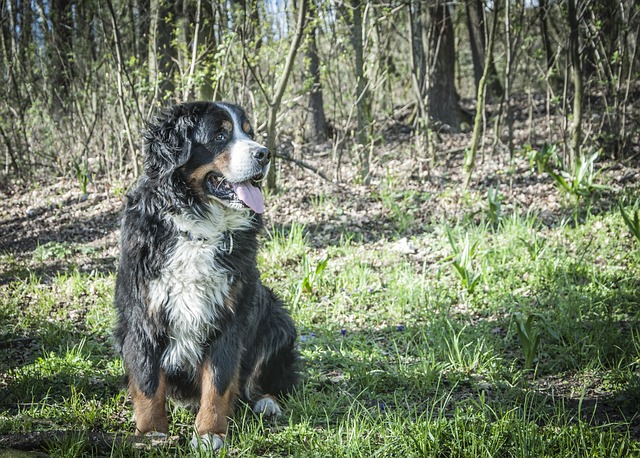
a. Buy the right tools
Bernese Mountain Dogs are double-coated, with a long topcoat and a soft undercoat. Choose the right tools so that you can get to both layers. You’ll need a slicker brush, a rake comb that removes mats and a pair of scissors for cutting the thick ones out.
b. Take care of the coat
Bernese Mountain Dogs need regular brushing because they shed a lot. Doing so can help to control the shedding.
These dogs change coats twice a year. It has a lot of hair, so groom it in sections. Though this takes longer, the brushing is thorough.
Work through your dog’s coat first. It may have some mats. These are clumps of knotted hair that get stuck at the undercoat. Use a spray that loosens tangles. Cut them out with a pair of scissors if they are too thick.
c. Use a slicker brush
After you have combed your dog’s coat, brush through it with a slicker brush. Using a slicker distributes healthy skin oils through the coat. The coat will then shine. Brush in the direction the hair grows.
d. Pay attention to sensitive spots
Some areas of your dog’s coat may need more attention. For example, comb through the chest fur, since it’s so long. Brush the hair behind the ears carefully, because it’s soft and mats quickly. Clean the tail carefully for the same reason.
e. Brush the face
Comb your dog’s face hair gently. It may not like this, but it’s important that you do so. Use the slicker brush for the task, taking care to avoid the eyes.
f. Cut the long hairs
You should trim the long hairs on your dog’s body, but don’t overdo it. Concentrate on the areas between the foot pads and the long hair on the ears.
Nutrition For Bernese Mountaing Dog
Feeding is perhaps the biggest concern of dog owners. Your Bernese Mountain Dog, like other dogs, needs proper nutrition. The Berner is a large dog that’s relatively sedentary. He only needs moderate amounts of exercise and prefers to laze at your feet. However, you do need to consider what to feed him to keep him in good health.
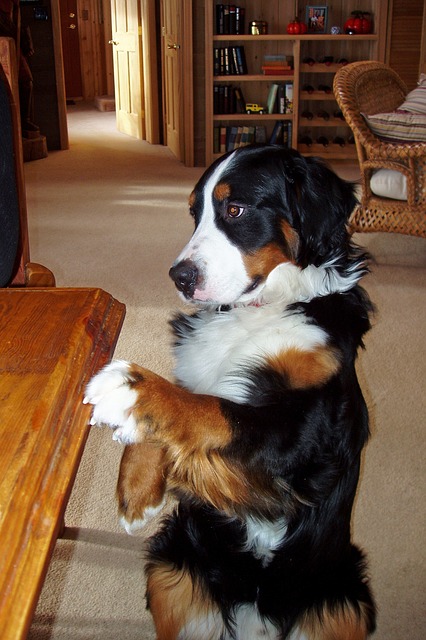
Large Bernese Mountain Dogs have a high protein needs. This nutrient is necessary for muscle and bone development. It builds lean muscle mass and allows them to keep to a healthy weight. Reliable protein sources are meat and fish. Note that meat meals, with lower levels of moisture, have higher levels of protein than fresh meat. Therefore, they are more beneficial for your dog than whole beef or chicken.
Besides protein, your dog needs fat as it’s a potent energy source. It should come from healthy, animal-based sources. Fish oil and chicken fat are more beneficial than Canola, Sunflower or Flaxseed. Since your Bernese Mountain Dog is big-sized and obesity-prone, keep the fat levels in his diet moderate.
Carbohydrates are also necessary because they give your dog vitamins, minerals, and dietary fiber. Rely on digestible carbs such as whole grains, oatmeal, and brown rice. Sweet potato and vegetables offer healthy carbs as well. Like fat, your Berner only needs moderate amounts of them.
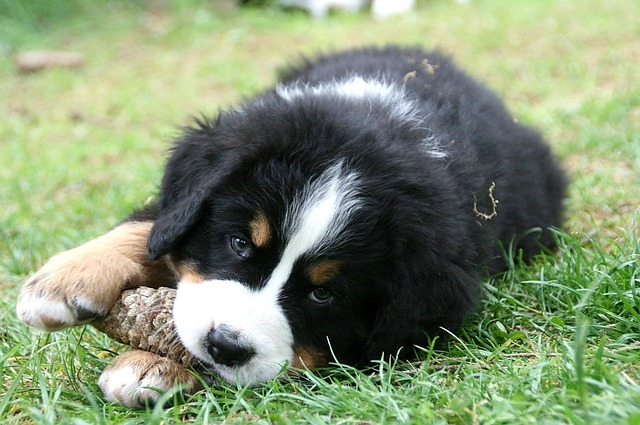
Vets and other pet experts suggest that you choose foods rich in protein and other nutrients. They usually recommend those with two or three protein sources. The best way to pick the right food is to compare the protein, fat, carbs and other ingredients in it.
It’s always best that you measure the amount of food that you feed your dog instead of giving him liberal amounts. While adults thrive on two daily meals, puppies do so on three.
Note that the these dogs have unique nutritional needs because of their propensity for Cancer. Garlic, Flaxseed and fish oil are among the nutrients it requires. Also, it’s wise that owners are selective when choosing dog food. So, what’s the best food for the Big Bernese Mountain Dog?
a. Brothers Complete Venison Meal & Egg Formula
The first food on the list is Brothers Complete Venison Meal and Egg Formula. It offers Berners a defense against allergies and, as it so happens, is food that’s Brothers formulated for them.
Filled with 22 Amino Acids, Probiotics, Enzymes and Prebiotics, it promises to keep your dog in good health. Being grain free, it prevents problems like liver disease and cancer. It also has flaxseed, another anti-cancer ingredient.
b. Nutro Natural Large Breed Young Adult Dog Food
What makes the Nutro pet food company stand out is that it offers an array of foods made with only the freshest, best ingredients. It has different product lines, including the Nutro breed-specific line, Farm Havest all natural diets and the Rotation revolving diets.
Natural Large Breed Young Adult Dog Food suits the Bernese Mountain Dog to a T. Made with chicken, brown rice, and other healthy nutrients it ensures your Bernese Mountain Dog’s well-being. 24% of it is crude Protein, and another 13% is raw Fat. It contains Glucosamine for bone health as well. DHA enhances cognition.
c. Addiction Viva La Venison Dry Food Formula
Started by a holistic veterinary surgeon, the Addiction Pet Food Company formulates foods to meet your Berner’s nutritional needs. It produces wet foods, dry foods, and raw formulas. The Viva La Venison Dry Food Formula, with venison, potatoes, and healthy chicken fat, aid your dog in maintaining a healthy body weight. It also contains chelated minerals, which encourage nutrient absorption. Probiotics help to protect its digestive system. Other healthy ingredients are carrots, apples, and eggs.
d. Fromm Family Large Breed Adult Gold
A family business, the Fromm Family Foods Company commits itself to promoting pet health. It introduced the world’s first premium pet food in 1949 and created the kibble making process.
Fromm Family Large Breed Adult Gold is ideal for this dog. Made with duck, chicken, oatmeal, brown rice and pearled barley, it encourages healthy digestion. Fromm also includes salmon oil, which helps his coat glisten.
Health Concerns of Bernese Mountain Dog
No creature is immune from illness, and health issues do trouble this big dog occasionally. These are some diseases that can stand in the way of their good health.
Food allergies may bother some Bernese Mountain Dogs. These are often difficult for doctors to diagnose and for owners to manage. They arise because the dogs’ immunity is weak. Buyers should consider if a potential puppy’s family has a history of allergic reactions to foods, soaps or creams.
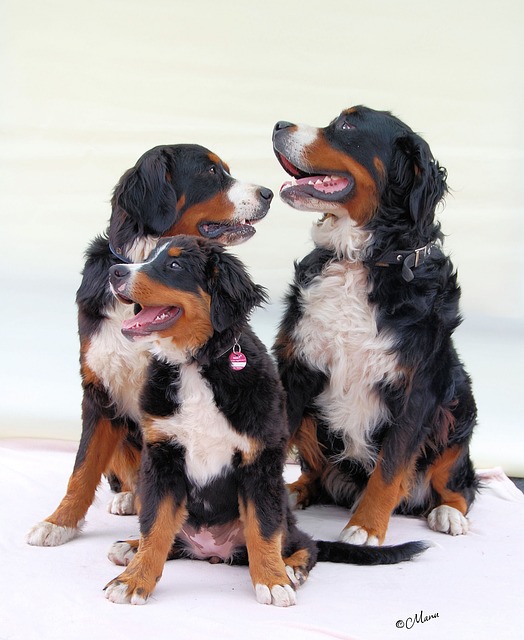
Autoimmune diseases affect them in the way they do other dog breeds. They are susceptible to Meningitis, a potentially fatal illness if not diagnosed early. Puppies are more prone to the disease than adult dogs.
Bloat, or indigestion, happens when there’s an excess of gas in a dog’s stomach. The overload causes it to twist. Emergency surgery is critical as mere minutes will save a dog’s life. This disease has a high mortality rate and dogs experienced it before may do so again.
Cancer poses a challenge to dogs as it does to humans. Breeders find that it narrows the gene pool from which they can select dogs to breed. Many veterinarians believe that it genes trigger the disease in these dogs. Histiocytic Sarcoma occurs most often in this breed. You may also find cancerous cells in the red blood vessel cells and the lymphatic area. They may also develop mast cell tumors, which are nodes that are either soft or hard.
Bernese Mountain Dogs may also develop Degenerative Myelopathy, or paralysis of the rear end. This disease happens progressively, often in senior dogs.
Dogs may develop diarrhea because they invest garbage or parasites. Some may develop runny stools because they have serious health issues. Coccidia, a parasite, often causes bloody stools. Puppies are prone to this contagious infection. Colitis, or the inflammation of the large intestine, may occur because of stress, bacteria or parasites. A Bernese which develops this infection will have runny bowels with mucus.
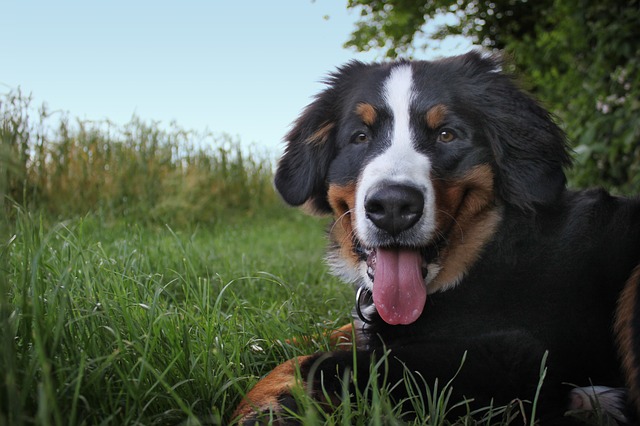
Some dogs, including Bernese Mountain Dogs, may have a tendency for Coprophagy or poop eating. It may mean that the dog is malnourished or cannot discriminate tastes. Feeding the dog crushed pineapple may help.
Some Bernese Mountain Dogs may have a food sensitivity or allergy. It may show itself as diarrhea, ear infections or skin irritations.
A dog may contract Guardia if it has taken in polluted water. Vets may prescribe Panacur, Metronidazole or Marquis. It’s painful and quite a difficult illness to overcome.
Inflammatory Bowel Disease or IBD describes a group of diseases often marked by diarrhea, vomiting, or weight loss. Irritation to the lining of the intestine causes it to become thickened and inflamed. A biopsy is needed to diagnose the disease.
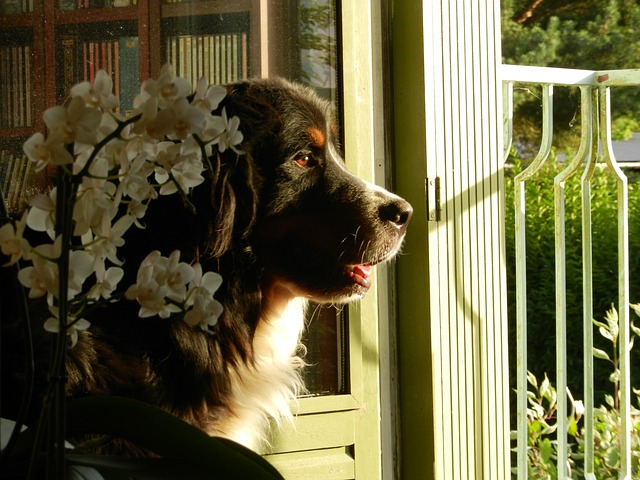
Bernese Mountain Dogs are prone to Inflammatory Bowel Disease, or IBS as well. The lining of the intestine becomes inflamed. IBS refers to a group of illnesses characterized by weight loss, vomiting or diarrhea.
Bernese Mountain Dogs, like other dogs, may develop Pica because they ingest foreign objects. The items may obstruct the dog’s stomach and in more dangerous cases, the throat. Dogs with Pica may develop diarrhea, bad breath or weight loss.
Elbow dysplasia (ED), or deformed elbow joints, is a degenerative bone disease that affects big dogs like Bernese Mountain Dogs. It may affect puppies, and often causes lameness. It will help breeders if they know if the dogs they intend to breed have family members with this condition. An offshoot of this disease is arthritis.
Hip Dysplasia, (HD) or an unstable hip socket, is a related condition. It may lead to crippling arthritis if left unchecked. Some affected dogs may experience lameness.
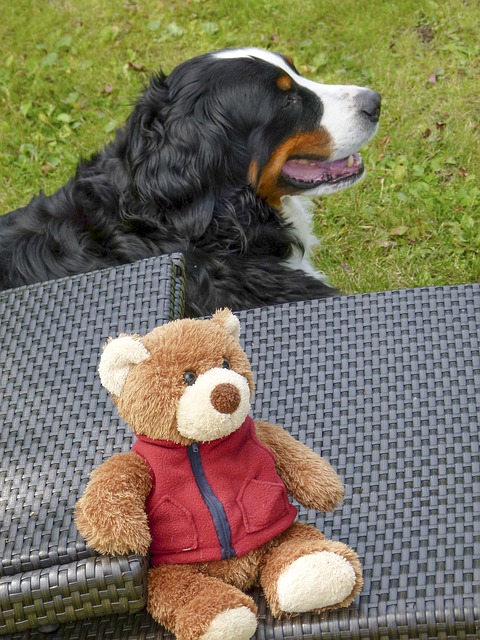
Some of these dogs may develop Entropion (inward turning eyelids) or Ectropion (outward turning eyelids). Either condition may damage the dog’s eye because the eyelid cannot close. As a result, debris may collect in it.
These dogs may develop hypothyroidism as well. They may put on weight and experience coat dryness. Their temperaments may change as well. Vets may recommend a supplement of thyroid hormones.
Bernese Mountain Dogs may develop Panostesis or impaired Long bones. It may cause lameness that lasts for a few months. The illness usually transfers from one leg to another. The condition is not hereditary, and poor diet may explain it.
Sub-aortic Stenosis, or partially obstructed blood flow to the heart, may occur just below the dog’s aorta. It may cause sudden death and is common in Berners.
Some Bernese Mountain Dogs develop bleeding disorders like Von Willebrand’s disease. It is fairly common and happens because of an odd blood clotting factor.